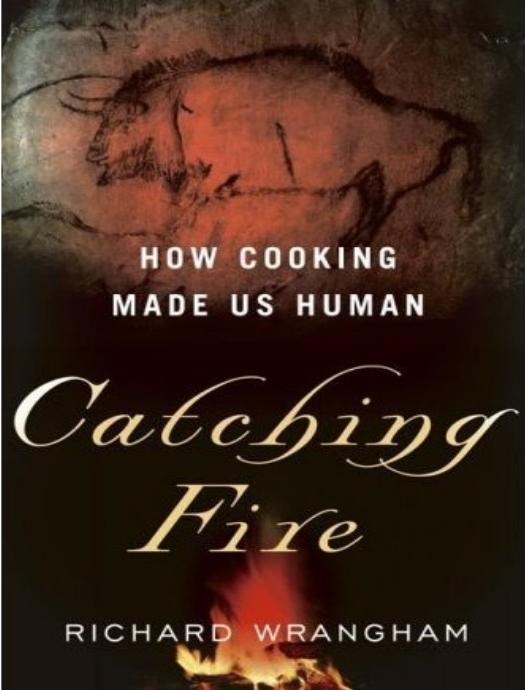Catching Fire: How Cooking Made Us Human by Richard Wrangham

Author:Richard Wrangham
Language: pt
Format: mobi, epub, azw3, pdf
Tags: Technology & Engineering, Life Sciences, Sociology, Social Science, Paleontology, SCIENCE, Life Sciences - Evolution - Human, Cooking, Evolution, Fire Science, General, Anthropology, Anthropology - General, Agriculture & Food, Palaeontology, Prehistoric Archaeology, Customs & Traditions, Archaeology, History
ISBN: 9780465020416
Publisher: Basic Books
Published: 2010-08-15T07:00:00+00:00
So however hard a man labors to produce food, in hunter-gatherer societies his rights to the food are a matter of communal decision. A man follows the rules, even if that means he gets nothing from his labor. Sometimes he must allow others to distribute his meat. A common requirement among Native American hunters was for boys making their first kill to carry their prize back to camp and stand by while others cooked and ate it. The practice symbolized the subordination of men to the demands of the group. More often, he divided his food himself. The community might allow him to make personal choices about who to give meat to, but not necessarily. In the western desert of Australia, every large hunted animal had to be prepared in a rigidly defined fashion when it was brought to camp. The hunter’s own share of a kangaroo was the neck, head, and backbone, while his parents-in-law received a hind leg, and old men ate the tail and innards. The contrast with women’s ownership of their foods is striking. Although women forage in small groups and might help one another find good trees or digging areas, their foods belong to them. The sex difference suggests that the cultural rules that specify how women’s and men’s foods are to be shared are adapted to the society’s need to regulate competition specifically over food. The rules were not merely the result of a general moral attitude.
A woman’s right to ownership protects her from supplicants of both sexes. In Australia’s western desert, a hungry aborigine woman can sit amicably by a cook’s fire, but she will not receive any food unless she can justify it by invoking a specific kinship role. It is even more difficult for a man. A bachelor or married man who approaches someone else’s wife in search of food would be in flagrant breach of convention and an immediate cause of gossip, just as a woman would be if she gave him any food. The norm is so strong that a wife’s presence at a meal can protect even a husband from being approached. Among Mbuti Pygmies, if a family is eating together by their hearth, they will be undisturbed. But when a man is eating alone, he is likely to attract his friends, who will expect to share his food.
Under this system, an unmarried woman who offers food to a man is effectively flirting, if not offering betrothal. Male anthropologists have to be aware of this to avoid embarrassment in such societies. Cofeeding is often the only marriage ceremony, such that if an unmarried pair are seen eating together, they are henceforward regarded as married. In New Guinea, Bonerif hunter-gatherers rely on the sago palm tree for their staple food year-round. If a woman prepares her own sago meal and gives it to a man, she is considered wed to him. The interaction is public, so others take the opportunity to tease the new couple with jokes equating food and sex, such as, “If you get a lot of sago you are going to be a happy man.
Download
Catching Fire: How Cooking Made Us Human by Richard Wrangham.epub
Catching Fire: How Cooking Made Us Human by Richard Wrangham.azw3
Catching Fire: How Cooking Made Us Human by Richard Wrangham.pdf
This site does not store any files on its server. We only index and link to content provided by other sites. Please contact the content providers to delete copyright contents if any and email us, we'll remove relevant links or contents immediately.
| Fossils | Game Theory |
| Genetics | Molecular Biology |
| Organic | Paleontology |
Sapiens: A Brief History of Humankind by Yuval Noah Harari(13046)
Sapiens by Yuval Noah Harari(4534)
Homo Deus: A Brief History of Tomorrow by Yuval Noah Harari(4276)
Pale Blue Dot by Carl Sagan(4001)
Origin Story: A Big History of Everything by David Christian(3137)
Livewired by David Eagleman(3121)
Brief Answers to the Big Questions by Stephen Hawking(2874)
Inferior by Angela Saini(2831)
Origin Story by David Christian(2682)
The Evolution of Beauty by Richard O. Prum(2551)
Signature in the Cell: DNA and the Evidence for Intelligent Design by Stephen C. Meyer(2499)
The Gene: An Intimate History by Siddhartha Mukherjee(2491)
Aliens by Jim Al-Khalili(2381)
How The Mind Works by Steven Pinker(2211)
Sex at Dawn: The Prehistoric Origins of Modern Sexuality by Ryan Christopher(2149)
From Bacteria to Bach and Back by Daniel C. Dennett(2147)
A Short History of Nearly Everything by Bryson Bill(2134)
Endless Forms Most Beautiful by Sean B. Carroll(2083)
Who We Are and How We Got Here by David Reich(2057)
